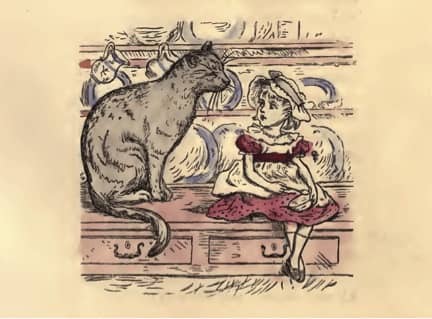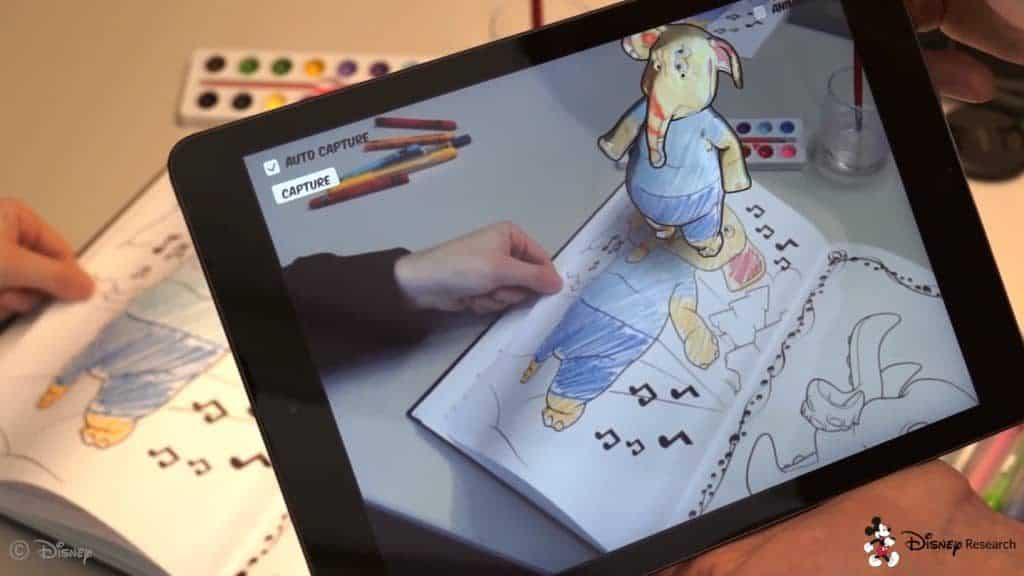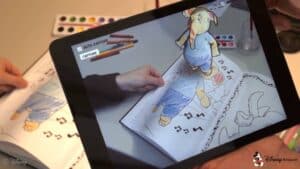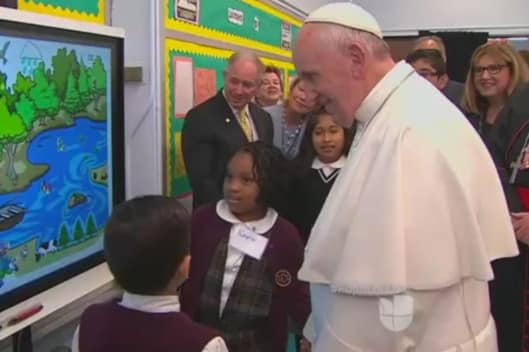The ever-inventive Disney research team has developed an amazing augmented reality coloring book. In a world of rich visual displays, coloring books seem like an anachronism. Yet they remain one of the first expressions of creativity for children. Now Disney has combined a coloring book with an augmented reality app called Color and Play.
Coloring in 3D
How it works: download the augmented reality coloring book app and then using a mobile device and a book from Disney (or printed pages), color in the drawings and the characters comes to life:
As a child fills in a cartoon character on the page, the app—making use of the camera on a smartphone or tablet—scans the colors and patterns they create to fill in a 3-D animated model of that same character within the app. Since a drawing is 2-D, the algorithm can also intelligently extrapolate patterns and color to parts of the 3-D model otherwise unrepresented in the drawing—for example, by coloring an elephant’s back the same color as its front. (Fastcodesign.com)
Obviously, many children will need help here as the augmented reality part relies on holding a Smartphone or tablet near the page. But it’s a creative solution to integrating virtual media into a printed format that has changed little over its long history.
This is not about the world of technology. It is about the world of the child, where anything can come to life, no matter the tools and medium used. Now the coloring book morphs into a virtual playground where actions become 3 dimensional. 
If you’re curious, the first coloring book was published by the McLoughlin Brothers in 1879, titled The Little
Folks Painting book.And yes, it actually was a “painting-book”, for watercolors, and is quite beautiful. From watercolors to crayons (at first a few colors, then many) and now, augmented reality.
Kids, AR and Education

Besides the “Wow! factor, the most striking aspect of this in my mind is its impact on education. We’re already in a world where children are comfortable using Smartboards – often more so than their instructors. Many of them (not all) have a comfort level with the digital realm that is striking – the image of the children in Harlem the other week giving Pope Francis a Smartboard demonstration comes to mind.
With children growing up in a world with augmented reality coloring books, what will their expectations be when they enter the classroom? When they get to Higher Education? The job market? A new generation is being immersed in a deeply visual culture and will be comfortable manipulating 3D virtual objects.
Educators as Learners
Those of us in education talk a lot about preparing our students (young and old) for a new world, for jobs not yet created, for social connectivity not yet invented. That’s all very true – and it cannot be said strongly enough.
But we better prepare ourselves for a new type of student that – from their youngest days – has experienced the world in ways that we could never imagine.
If we are not learners, and profoundly so, we will fail our students completely.
Emory Craig is a writer, speaker, and consultant specializing in virtual reality (VR) and artificial intelligence (AI) with a rich background in art, new media, and higher education. A sought-after speaker at international conferences, he shares his unique insights on innovation and collaborates with universities, nonprofits, businesses, and international organizations to develop transformative initiatives in XR, AI, and digital ethics. Passionate about harnessing the potential of cutting-edge technologies, he explores the ethical ramifications of blending the real with the virtual, sparking meaningful conversations about the future of human experience in an increasingly interconnected world.


